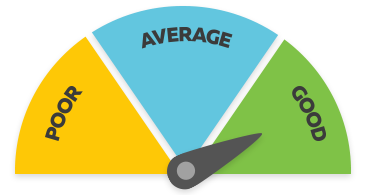Health and Safety Adviser
Kaitohutohu Hauora-Haumaru
Alternative titles for this job
Health and safety advisers monitor workplace health and safety hazards, train employees on health and safety procedures, and investigate accidents.
Pay
Health and safety advisers with less than two years' experience usually earn
$51K-$70K per year
Health and safety advisers with more than seven years' experience can earn
$100K-$125K per year
Source: Lawson Williams, 2023.
Job opportunities
Pay
Pay for health and safety advisers varies depending on their skills, experience and qualifications.
- Health and safety advisers with one to two years' experience usually earn $51,000 to $70,000 a year.
- Health and safety advisers with three to six years' experience can earn $65,000 to $105,000.
- Those with over seven years' experience can earn from $100,000 to $125,000.
Source: Lawson Williams Consulting Group, 2023.
(This information is a guide only. Find out more about the sources of our pay information)
What you will do
Health and safety advisers may do some or all of the following:
- identify and measure chemical, physical and health hazards
- provide reports, and develop strategies, policies and procedures to minimise workplace hazards
- educate and train staff in managing workplace risks
- provide information on new hazards and legal requirements
- encourage staff to participate in health and safety procedures
- inspect workplaces to check health and safety procedures are followed
- record and investigate incidents and injuries, and equipment damage
- help injured staff return to work
- prepare reports on safety performance.
Skills and knowledge
Health and safety advisers need to have knowledge of:
- health and safety legislation
- work-related illnesses and injuries, and rehabilitation strategies
- WorkSafe policies, guidelines, and procedures
- Accident Compensation Corporation (ACC) procedures, and how an organisation becomes ACC-accredited
- international health and safety standards and tools
- how businesses function
- the industry they are working in.
Working conditions
Health and safety advisers:
- usually work regular business hours, but may sometimes need to work evenings and weekends
- usually work in offices and at worksites such as factories, farms and forests
- may work in noisy, dirty conditions
- may travel locally between worksites, and overseas to attend conferences.
What's the job really like?

Robert Powell
Health, Safety and Well-Being Manager
Started with the Air Force
Robert Powell didn’t start off with ambitions of working in health and safety. It was only after he became a health and safety representative while serving in the Air Force that he realised it was the career for him.
"I found that I actually enjoyed doing it more than my real job. It involves working with a lot of people and a lot of problem solving and I felt there were good opportunities for growth for me."
People-focused work
For Robert, the best part of the job is working with people and teaching them how to be safe in the workplace – but it can also be the most challenging part.
"If you try and do everything for someone they’ll switch off, but if you work with them to help them come to their own solutions it is a lot more effective.
"I find the most challenging thing is teaching the people who have been doing a particular job for a long time. Young people are willing to take on new information, but the trick is to get their managers and supervisors on board.
"You need to be able to communicate effectively with people."
Volunteer to get a taste of the job
If a career in health and safety sounds like it might be for you, Robert recommends getting as much experience as you can.
"If you’re interested in working in health and safety I recommend you volunteer to be a health and safety representative in your current workplace – that way you can get a feel for whether it agrees with you or not."
Entry requirements
To become a health and safety adviser you usually need an occupational health and safety certificate, diploma or degree.
Several tertiary providers offer these courses.
Secondary education
There are no specific secondary education requirements to become a health and safety adviser. However, biology, chemistry, physics, maths and English are useful.
Additional requirements for specialist roles:
To specialise as a health and safety adviser in a particular industry, such as forestry, you need to complete further on-the-job qualifications relevant to that industry, or have significant work experience in the industry.
Occupational hygienist
To work as an occupational hygienist you need professional qualifications in science, maths or engineering.
Personal requirements
Health and safety advisers need to be:
- good at relating to a wide range of people
- patient
- able to remain calm in emergencies
- skilled at understanding complex information and presenting it simply and accurately
- safety-conscious
- good at problem-solving and decision-making
- able to work independently and in a team.
Being a health and safety adviser involves working with a lot of people and doing a lot of problem solving.

Robert Powell
Health, Safety and Well-Being Manager
Useful experience
Useful experience for health and safety advisers includes:
- work in a trade that requires health and safety awareness, such as construction or agriculture
- work as a health and safety representative while doing a different job
- experience in the industry that you want to work in – for example, forestry
- a background in occupational health nursing
- work for the Accident Compensation Corporation (ACC).
Physical requirements
Health and safety advisers in some specialised areas, such as construction, need to be comfortable working in confined spaces and at heights.
They may also need normal colour vision because many safety systems are colour-coded.
Find out more about training
- Employers and Manufacturers' Association
- (09) 367 0909 - learn@ema.co.nz - www.ema.co.nz
- Health and Safety Association of New Zealand
- info@hasanz.org.nz - www.hasanz.org.nz
- NZ Institute of Safety Management
- 027 524 3911 - admin@nzism.org - www.nzism.org
- NZ Occupational Health Nurses' Association (Inc)
- 027 526 6220 - admin@nzohna.org.nz - www.nzohna.org.nz
- New Zealand Occupational Hygiene Society
- admin@nzohs.org.nz - www.nzohs.org.nz
What are the chances of getting a job?
Good demand for health and safety advisers
Opportunities for health and safety advisers are good due to:
- demand for trained, experienced health and safety advisers in many industries, especially construction, agriculture, manufacturing and forestry
- WorkSafe's strategy to improve health and safety in New Zealand workplaces
- government and industry initiatives to improve the health and safety culture in New Zealand industries.
Shortage of trained, experienced health and safety advisers
The number of new health and safety advisers is insufficient to meet demand. This is because it takes a long time to train as a health and safety adviser, and relevant industry experience is important for specific roles. As a result, some employers are recruiting from overseas.
High demand for occupational hygienists
There is strong demand for occupational hygienists (sometimes called industrial hygienists) who identify, evaluate and control risks to worker health from physical, chemical, and biological hazards.
According to the Census, 2,445 health and safety advisers worked in New Zealand in 2018.
Types of employers varied
Health and safety advisers may:
- be employed by businesses across a wide range of industries
- work as consultants for health and safety consulting firms
- be self-employed, working on contract for several smaller businesses
- work in the not-for-profit sector.
Larger businesses in industries with higher rates of work-related injuries usually employ full-time health and safety advisers. These industries include:
- manufacturing
- mining and quarrying
- forestry
- fisheries
- construction
- agriculture.
Sources
- Aldridge, P, executive director, Health and Safety Association of New Zealand, careers.govt.nz interview, March 2018.
- Health and Safety Association of New Zealand website, acccessed May 2022, (www.hasanz.org.nz).
- New Zealand Occupational Hygiene Society website, accessed May 2022, (www.nzohs.org.nz).
- New Zealand Institute of Safety Management, 'Careers', accessed March 2018, (www.nzism.org).
- New Zealand Institute of Safety Management, careers.govt.nz interview, March 2018.
- Stats NZ, '2018 Census Data', 2019.
- WorkSafe, 'Our Priorities', accessed March 2018, (www.worksafe.govt.nz).
(This information is a guide only. Find out more about the sources of our job opportunities information)
Progression and specialisations
Health and safety advisers may progress to set up their own business, or move into management, teaching or research roles.
Health and safety advisers can specialise as an occupational hygienist, or specialise in particular industries such as:
- agriculture, forestry or fishing
- construction
- health
- hospitality
- mining
- oil and gas
- processing and manufacturing.
Last updated 2 August 2024


